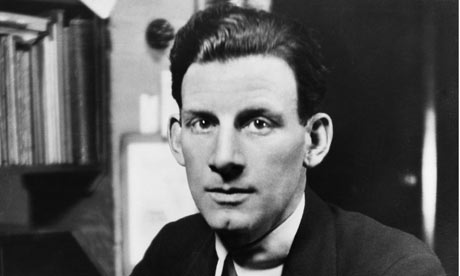 In spite of
the fact that I am such an avid reader, I am not very fond of poetry. I would much rather find myself lost in the pages of a heavy tome than confounded
within the lines of poems. For as long as I can remember, analyzing (and simply
understanding poetry) has been a weakness of mine. Today, however, I am going
to be taking on “Base Details” by Siegfried Sassoon.
In spite of
the fact that I am such an avid reader, I am not very fond of poetry. I would much rather find myself lost in the pages of a heavy tome than confounded
within the lines of poems. For as long as I can remember, analyzing (and simply
understanding poetry) has been a weakness of mine. Today, however, I am going
to be taking on “Base Details” by Siegfried Sassoon.
As I found
myself reading through the poem, the message I believed Sassoon was trying to
convey was that there was a stark difference between soldiers and Majors, yet
creating a satiric tone while doing so. He gives the reader the impression that
soldiers are forced to do the fighting, while the Majors are given the luxury
of safety. This overall meaning was illustrated through Sassoon’s use of poetic
devices, the most prominent being imagery. The first example was given as the
poem reads, “I’d live with scarlet Majors at the Base,/ And speed glum heroes
up the line to death” (2-3). Sassoon utilizes vivid diction as a portrayal of
two things: the treatment of soldiers, and how they feel about it. We now see
that the Majors are aiding the soldiers in their demise as they force them to
the line of battle, or “death” as Sassoon writes, however, we also see that
they are unhappy about it. As Sassoon refers to the soldiers as “glum heroes,”
we learn of the disparity behind their heroic action.
This use of
imagery is continued throughout “Base Details” and Sassoon sets the tone with
his diction, but the end of the poem best exemplifies this point. The poem states,
“And when the war is done and youth stone dead, / I’d toddle safely home and
die – in bed” (9-10). These two lines
are the epitome of everything Sassoon meant the poem to be; as the war comes to
a close, the soldiers who were willing to give their all will be gone, while
those who were watching from the sidelines will be able to return home. He uses
imagery such as “stone dead” and “toddle safely home” to place emphasis on this
point – the Majors will be able to stroll back unscathed while the glum heroes
will be the ones left behind, stone dead.
Upon
completing this poem, I felt slightly differently about analyzing and understanding
poetry. Whether it was Sassoon’s style or my fascination with the era of the
First World War, something drew me into this poem. The way the imagery
intertwined with the purpose of the poem worked well and created a critical
tone that made the poem enjoyable, yet significant and important. The satirical
style of the poem was consistently evident and Sassoon’s imagery highlighted it
well.
- 7:35 PM
- 3 Comments
